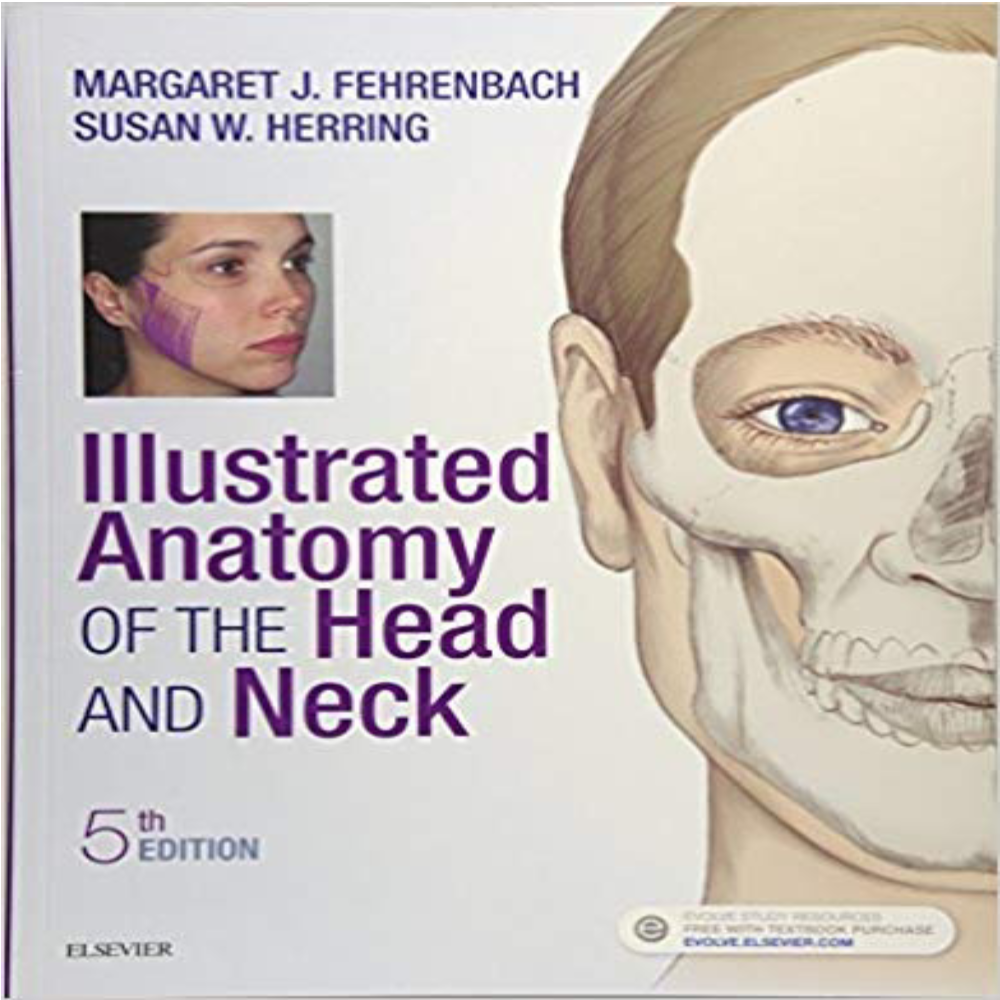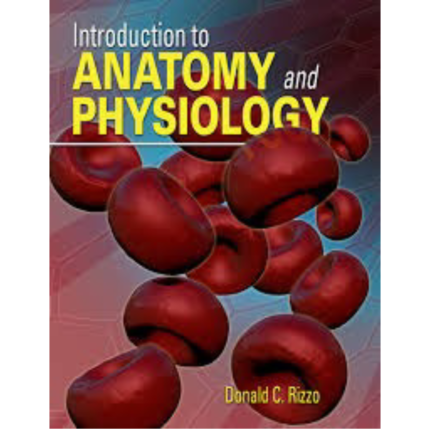Chapter 11: Fasciae and Spaces
Fehrenbach: Illustrated Anatomy of the Head and Neck, 5th Edition
MULTIPLE CHOICE
1. The fascia consists of layers of epithelial tissue. The fascia lies underneath the skin and also surrounds the muscles, bones, vessels, nerves, organs, and other structures of the body.
a. Both statements are true.
b. Both statements are false.
c. The first statement is true; the second is false.
d. The first statement is false; the second is true.
ANS: D
Feedback
A The first statement is false. The fascia consists of layers of fibrous connective tissue.
B The second statement is true. The fascia lies underneath the skin and also surrounds the muscles, bones, vessels, nerves, organs, and other structures of the body.
C The first statement is false. The fascia consists of layers of fibrous connective tissue.
D The first statement is false. The fascia consists of layers of fibrous connective tissue. The second statement is true. The fascia lies underneath the skin and also surrounds the muscles, bones, vessels, nerves, organs, and other structures of the body.
DIF: Recall REF: p. 264 OBJ: 2
TOP: CDA: General Chairside, I. A. Demonstrate understanding of basic oral and dental anatomy, physiology, and development
MSC: NBDHE, Scientific Basis for Dental Hygiene Practice, 1.1 Anatomy
2. Superficial fasciae of the body, as well as superficial fasciae of the head and neck, contain vessels, nerves, and muscles BECAUSE the superficial fasciae are located just deep to and attached to skin.
a. Both the statement and reason are correct and related.
b. Both the statement and reason are correct but NOT related.
c. The statement is correct, but the reason is NOT.
d. The statement is NOT correct, but the reason is correct.
e. NEITHER the statement NOR the reason is correct.
ANS: D
Feedback
A The statement is NOT correct. The superficial fasciae of the body do NOT usually enclose muscles, except for the superficial fasciae of the head and neck. The superficial fasciae contain muscles of facial expression.
B The statement is NOT correct. The superficial fasciae of the body do NOT usually enclose muscles, except for the superficial fasciae of the head and neck. The superficial fasciae contain muscles of facial expression. Also, the statement and the reason are related.
C The statement is NOT correct. The superficial fasciae of the body do NOT usually enclose muscles, except for the superficial fasciae of the head and neck. The superficial fasciae contain muscles of facial expression. The reason is correct. Superficial fasciae are located just deep to and attached to the skin.
D The statement is NOT correct. The superficial fasciae of the body do NOT usually enclose muscles, except for the superficial fasciae of the head and neck. The superficial fasciae contain muscles of facial expression.
E The reason is correct. Superficial fasciae are located just deep to and attached to the skin.
DIF: Comprehension REF: p. 264 OBJ: 2
TOP: CDA: General Chairside, I. A. Demonstrate understanding of basic oral and dental anatomy, physiology, and development
MSC: NBDHE, Scientific Basis for Dental Hygiene Practice, 1.1 Anatomy
3. Which fascia is NOT included in the layers of the deep fasciae of the face and jaws?
a. Brachial fascia
b. Temporal fascia
c. Masseteric-parotid fascia
d. Pterygoid fascia
ANS: A
Feedback
A Brachial fascia is investing fascia in the arm and NOT in the face and jaws.
B Temporal fascia is a layer of the deep fasciae of the face and jaws. It covers the temporal muscle down to the zygomatic arch.
C Masseteric-parotid fascia is a layer of the deep fasciae of the face and jaws. The masseteric-parotid fascia is located inferior to the zygomatic arch and covers the masseter muscle. It surrounds the parotid salivary gland.
D The pterygoid fascia is a layer of the deep fasciae of the face and jaws. The pterygoid fascia is located on the medial surface of the medial pterygoid muscle.
DIF: Recall REF: pp. 264-266 OBJ: 2
TOP: CDA: General Chairside, I. A. Demonstrate understanding of basic oral and dental anatomy, physiology, and development
MSC: NBDHE, Scientific Basis for Dental Hygiene Practice, 1.1 Anatomy
4. Which of the following statements is the BEST description of investing fascia?
a. It is a tube of deep cervical fasciae, deep to the sternocleidomastoid muscle, running inferiorly along each side of the neck from the base of the skull to the thorax.
b. It is the most external layer of deep cervical fasciae that surrounds the neck, continuing onto the masseteric-parotid fascia.
c. It is a single midline tube of deep cervical fasciae running inferiorly along the neck, surrounding the airway and food way, including the trachea, esophagus, and thyroid gland.
d. It is the deepest layer of the deep cervical fasciae, which covers the vertebrae, spinal column, and associated muscles.
ANS: B
Feedback
A This is the description of the carotid sheath. It is a tube of deep cervical fasciae, deep to the sternocleidomastoid muscle, running inferiorly along each side of the neck from the base of the skull to the thorax.
B Investing fascia is the most external layer of deep cervical fasciae that surrounds the neck, continuing on to the masseteric-parotid fascia.
C This is the description of visceral fascia. It is a single midline tube of deep cervical fasciae running inferiorly along the neck, surrounding the airway and food way including the trachea, esophagus, and thyroid gland.
D This is the description of vertebral fascia. It is the deepest layer of the deep cervical fasciae, which covers the vertebrae, spinal column, and associated muscles.
DIF: Recall REF: p. 266 OBJ: 2
TOP: CDA: General Chairside, I. A. Demonstrate understanding of basic oral and dental anatomy, physiology, and development
MSC: NBDHE, Scientific Basis for Dental Hygiene Practice, 1.1 Anatomy
5. Which of the following structures listed below is NOT found within the carotid sheath?
a. Internal carotid artery
b. Common carotid artery
c. Eleventh cranial nerve or accessory nerve
d. Internal jugular vein
ANS: C
Feedback
A The internal carotid artery is within the carotid sheath.
B The common carotid artery is within the carotid sheath.
C The tenth cranial nerve or the vagus nerve is within the carotid sheath but NOT the eleventh cranial nerve or accessory nerve. The eleventh cranial nerve or the accessory nerve exits the skull through the jugular foramen, which is between the occipital and temporal bones.
D The internal jugular vein is within the carotid sheath.
DIF: Recall REF: p. 266 OBJ: 3
TOP: CDA: General Chairside, I. A. Demonstrate understanding of basic oral and dental anatomy, physiology, and development
MSC: NBDHE, Scientific Basis for Dental Hygiene Practice, 1.1 Anatomy
6. Which of the following fasciae surrounds the trachea, esophagus, and thyroid gland in the neck?
a. Vertebral fascia
b. Visceral fascia
c. Buccopharyngeal fascia
d. Prevertebral fascia
ANS: B
Feedback
A The vertebral fascia covers the vertebrae, spinal column, and associated muscles.
B The visceral fascia surrounds the airway and food way, including the trachea, esophagus, and thyroid gland.
C The buccopharyngeal fascia encloses the entire superior part of the alimentary canal and is continuous with the fascia on the surface of the buccinator muscle.
D The prevertebral fascia is also known as the vertebral fascia, which covers the vertebrae, spinal column, and associated muscles.
DIF: Recall REF: p. 266 OBJ: 2
TOP: CDA: General Chairside, I. A. Demonstrate understanding of basic oral and dental anatomy, physiology, and development
MSC: NBDHE, Scientific Basis for Dental Hygiene Practice, 1.1 Anatomy
7. Which of the following fasciae is also known as pretracheal fascia?
a. Visceral fascia
b. Prevertebral fascia
c. Buccopharyngeal fascia
d. Investing fascia
ANS: A
Feedback
A The visceral fascia is also known as pretracheal fascia.
B Prevertebral fascia is also known as vertebral fascia and NOT visceral fascia.
C Buccopharyngeal fascia is NOT known as visceral fascia.
D Investing fascia is NOT known as visceral fascia.
DIF: Recall REF: p. 266 OBJ: 2
TOP: CDA: General Chairside, I. A. Demonstrate understanding of basic oral and dental anatomy, physiology, and development
MSC: NBDHE, Scientific Basis for Dental Hygiene Practice, 1.1 Anatomy
8. A dental professional MUST have knowledge of the anatomic aspects of the spaces of the head and neck when examining a patient BECAUSE these spaces can be involved in infections arising in dental tissue.
a. Both the statement and the reason are correct and related.
b. Both the statement and the reason are correct but NOT related.
c. The statement is correct, but the reason is NOT.
d. The statement is NOT correct, but the reason is correct.
e. NEITHER the statement NOR the reason is correct.
ANS: A
Feedback
A The statement is correct. Dental professionals MUST know the anatomic aspects of the spaces because this allows the dental professional to form a three-dimensional view of the head and neck anatomy, and it also will permit the dental professional to identify and understand possible infections occurring within the head and neck. The reason is also correct because these spaces communicate with each other directly, as well as through their blood and lymph vessels. In addition, the statement and the reason are related. Both relate to the spaces, the role of the spaces, and the importance of considering these spaces during the patient examination.
B The statement and the reason are correct and they are related. Dental professionals MUST know the anatomic aspects of the spaces because this allows them to form a three-dimensional view of the head and neck anatomy and permits them to identify and understand possible infections occurring within the head and neck. Also, these spaces communicate with each other directly, as well as through their blood and lymph vessels. Both relate to the spaces, the role of the spaces, and the importance of considering these spaces during the patient examination.
C The statement is correct. Dental professionals MUST know the anatomic aspects of the spaces because this allows the dental professional to form a three-dimensional view of the head and neck anatomy, and it also will permit the dental professional to identify and understand possible infections occurring within the head and neck. The reason is also correct. These spaces communicate with each other directly, as well as through their blood and lymph vessels.
D The statement is correct. Dental professionals MUST know the anatomic aspects of the spaces because this allows them to form a three-dimensional view of the head and neck anatomy, and it also will permit the dental professional to identify and understand possible infections occurring within the head and neck.
E The statement and the reason are correct. Dental professionals MUST know the anatomic aspects of the spaces because this allows the dental professional to form a three-dimensional view of the head and neck anatomy, and it also permits the dental professional to identify and understand possible infections occurring within the head and neck. Also, these spaces communicate with each other directly, as well as through their blood and lymph vessels.
DIF: Comprehension REF: p. 277 OBJ: 4
TOP: CDA: General Chairside, I. A. Demonstrate understanding of basic oral and dental anatomy, physiology, and development | CDA: General Chairside, I. B. Preliminary Physical Examination | CDA: General Chairside, II. C. Describe how to perform and/or assist with intraoral procedures | CDA: General Chairside, II. D. Patient Management | CDA: General Chairside, V. A. Oral Health Information | CDA: General Chairside, VI. A. 4. Describe how to respond to and assist in the management of the signs and symptoms related to specific medical conditions/emergencies likely to occur in the dental office
MSC: NBDHE, Scientific Basis for Dental Hygiene Practice, 1.1 Anatomy | NBDHE, Scientific Basis for Dental Hygiene Practice, 5.0 Pathology | NBDHE, Provision of Clinical Dental Hygiene Services, 1.0 Assessing Patient Characteristics | NBDHE, Provision of Clinical Dental Hygiene Services, 3.0 Planning and Managing Dental Hygiene Care
9. Where is the vestibular space of the mandible located?
a. Envelopes parotid salivary gland
b. Superior to upper lip
c. Between buccinator muscle and oral mucosa
d. Lateral to buccinator muscle
ANS: C
Feedback
A The parotid space envelopes the parotid salivary gland.
B The canine space is located superior to the upper lip.
C The vestibular space of the mandible is located between the buccinator muscle and the oral mucosa.
D The buccal space is located lateral to the buccinator muscle.
DIF: Recall REF: p. 267 OBJ: 3
TOP: CDA: General Chairside, I. A. Demonstrate understanding of basic oral and dental anatomy, physiology, and development
MSC: NBDHE, Scientific Basis for Dental Hygiene Practice, 1.1 Anatomy
10. Which space contains BOTH part of the mandible and the inferior alveolar nerve and vessels?
a. Pterygomandibular space
b. Space within body of mandible
c. Submental space
d. Submandibular space
ANS: B
Feedback
A The pterygomandibular space contains ONLY a part of the inferior alveolar nerve and vessels and NOT the mandible.
B The space within the body of the mandible contains both part of the mandible and the inferior alveolar nerve and vessels.
C The submental space contains both the submental lymph nodes and anterior jugular vein.
D The submandibular space contains submandibular lymph nodes, most of the submandibular salivary gland, and parts of the facial artery.
DIF: Recall REF: p. 268, Table 11-2 OBJ: 3
TOP: CDA: General Chairside, I. A. Demonstrate understanding of basic oral and dental anatomy, physiology, and development
MSC: NBDHE, Scientific Basis for Dental Hygiene Practice, 1.1 Anatomy













Reviews
There are no reviews yet.